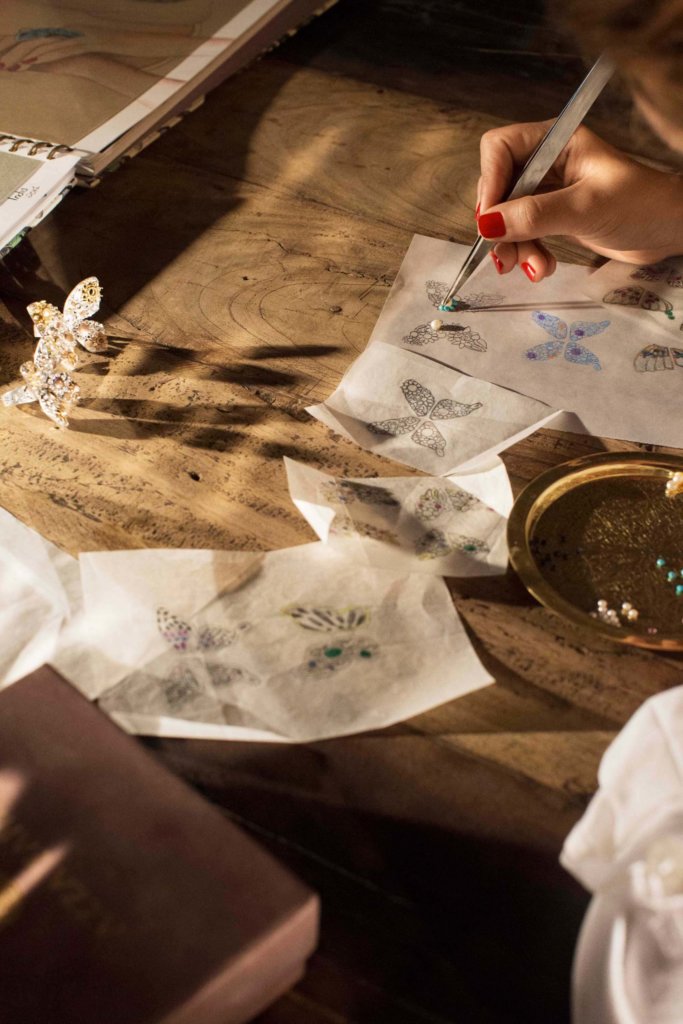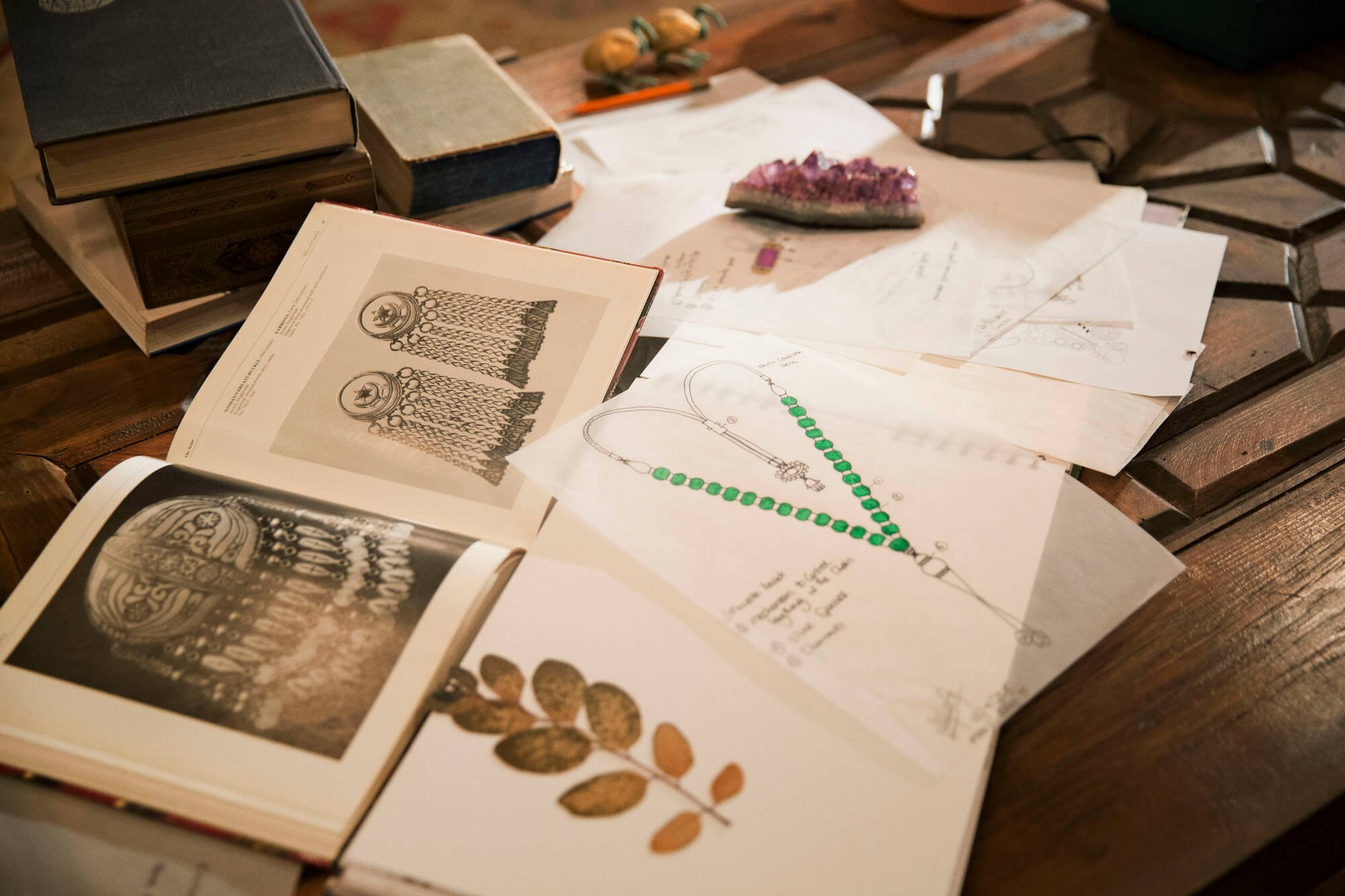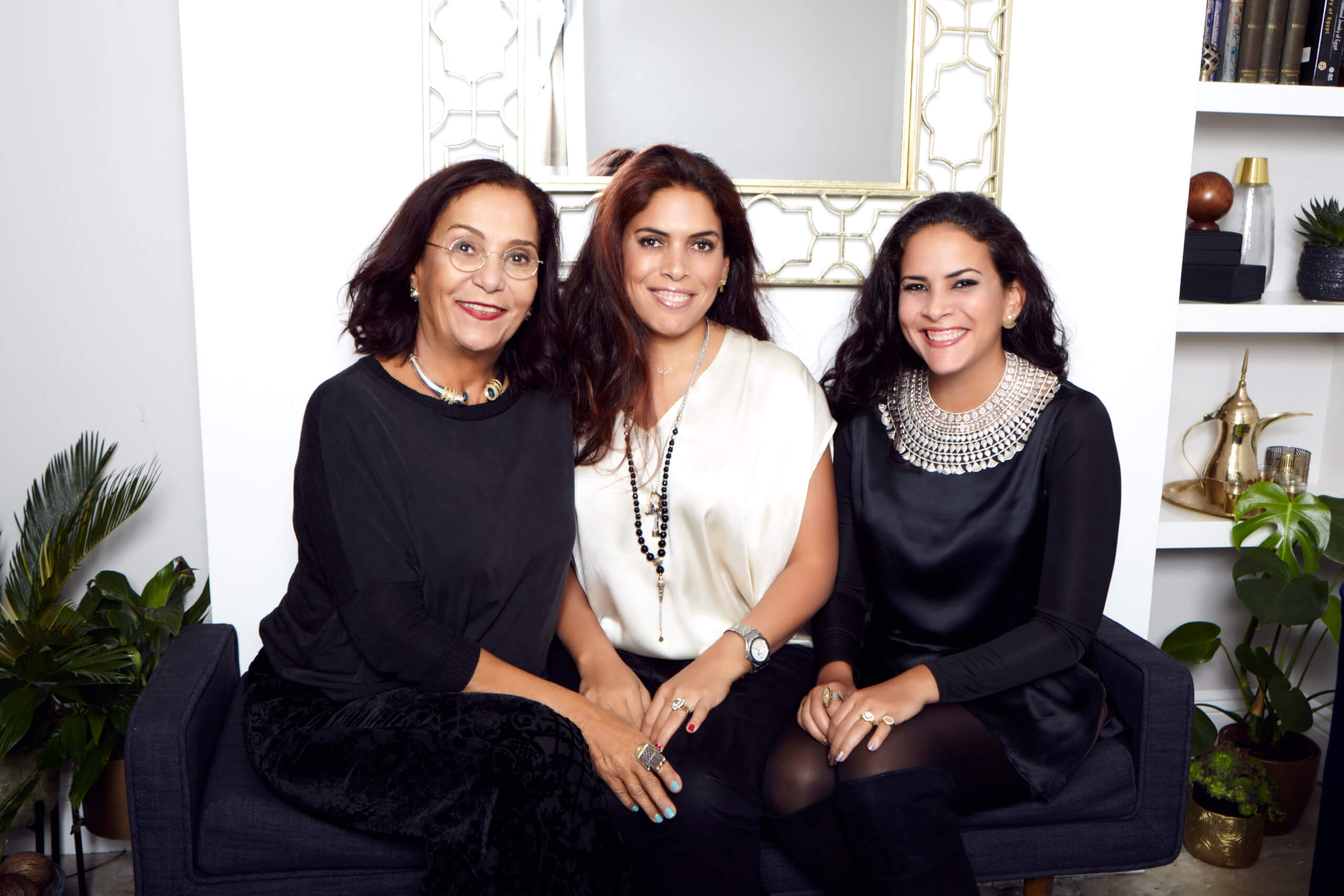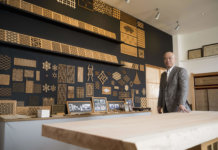Luxury brand Azza Fahmy stands for some of the most sought-after and highly regarded jewellery in the world. The studio’s namesake, Egyptian designer, artist and entrepreneur Azza Fahmy, who founded the atelier in 1969, now works closely with her daughters Fatma and Amina. Their sublime aesthetic draws inspiration from traditional design elements in a retrospective glimpse of Middle Eastern history as far back as the Pharaonic Era. Not only is their unmistakable handcrafted jewellery worn by politicians, royalty and celebrities, but their collections also feature prominently in some the world’s most iconic museums, including the British Museum and the Louvre.
Exporting traditional Egyptian craftsmanship to the world, Azza Fahmy operates 16 retail locations across the Middle East and Europe along with a consummately modern online boutique.
In addition to her overwhelming success as a craftsman and entrepreneur, Azza Fahmy is a pioneer, shattering long-established gender paradigms in her industry, which has traditionally been male-dominated. In an industry where fathers have historically passed the trade to their sons, Azza Fahmy runs her business with her two daughters, Fatma and Amina, by her side. In doing so, Azza Fahmy Jewellery represents a refreshing break from the norm.
Recently, Tharawat Magazine sat down with Azza Fahmy, Fatma Ghali and Amina Ghali to discuss family business dynamics, the erosion of artisanal skills and how relating craftsmanship to millennials may hinge on environmental sustainability.

Did you always know your daughters would join you in the family business?
Azza: When I founded the business, the girls were not yet born. Their presence is an exquisite piece of jewellery that fills me with emotion. Fatma’s and Amina’s addition, which makes Azza Fahmy a family business, is something that came straight from heaven – there was no forethought or plan.
For my part, I knew I wanted to pursue jewellery design as soon as I sat down and started working with my hands, five hours at a time. I was emboldened by my successes; beautiful new pieces emerged week to week or month to month.
The concept of working together as a family was only solidified when Fatma joined. I sent her to a marketing workshop, and when she came back, she brought a detailed methodology to step up our marketing. Slowly, through her expertise, our exposure has steadily increased.
When I founded the business, the girls were not yet born. Their presence is an exquisite piece of jewellery that fills me with emotion. Fatma’s and Amina’s addition, which makes Azza Fahmy a family business, is something that came straight from heaven – there was no forethought or plan.
Amina and Fatma, when did it become apparent that you wanted to be part of the family business?
Fatma: Our experiences have been vastly different, though we were both involved in the business even as girls. We travelled with our mom, helping her at exhibitions and attending workshops. The tenets of jewellery design were ingrained into us early.
However, I had no formal plans to join the family business. In Cairo, while I was pursuing my post-secondary education in Fine Arts, I found I had free time on my hands. So, I decided to apply myself and help out with marketing on a part-time basis. Twenty years later, I am still here.
Amina: My path to the family business, on the other hand, felt entirely predestined. Even at the age of eight or nine, I would sign birthday cards with ‘future best designer in the world’. I knew what I wanted to do with my life.
At 16, I was accepted into design school abroad, but they told me I was too young to join – they could not legally accept me until I was 18. Fatma suggested I go to Italy and learn a language or pick up an art course.
Coincidentally, I applied to Alchimia, one of the best design schools in Europe, but they misread my birth year as 1973 instead of 1983. So there I was, 17 and studying alongside already established jewellery designers.
On the first day, I learned the techniques to make a brass ring. That night, I told my mother that this is it – this is what I want to do for the rest of my life.

How did your perceptions of each other change when you began working together?
Fatma: Falling into a comfortable working routine with my mother and Amina was an organic progression. No dramatic shift in perception marked the transition to coworkers – I had seen them in this context for most of my life.
Amina: For me, there was a slight change in perception, but it came very naturally. Relationships evolve as you age and mature. Personal growth necessitates this shift in dynamics, which is the natural course as time progresses.
Is craftsmanship still celebrated in Egypt today?
Azza: Craftsmanship is in crisis, and not just in Egypt – the erosion of craftsmanship is ubiquitous. Quality handmade goods are becoming harder to find everywhere you go. I opened The Design Studio by Azza Fahmy for this reason. We employ artisans to teach masterclasses transmitting traditional craftsmanship skills because these techniques are in danger of being lost forever.
I wish to see a revival of the Bauhaus movement, which was initiated by the eponymous German art school operating through the 1920s. Bauhaus is typified by an excellent working relationship between craftspeople and designers. I want to help people create unique, upscale pieces, not only jewellery – the appeal and application of exquisite craftsmanship is universal.
Amina: Worldwide, hand craftsmanship is a dying art across industries. Machine manufacturing is much more efficient from both a cost and a time-to-market perspective. Somewhere along the way, buying generic became normalised. People don’t call the local carpenter to make a bed for them anymore; they go to IKEA.
This situation, however, is not without hope. Over the last decade, we have noticed a resurgence in people looking for superior products, both in terms of quality and design. They are weary of ready-made – generic products, by definition, lack character and emotive capacity.
Despite the erosion of craftsmanship, I expect preferences to equalise, at least to some extent. The younger generation’s appreciation for quality handcrafted products, in a reaction against disposable generic goods, is growing.


Can craftspeople still embrace modern marketing technology without compromising tradition or identity?
Fatma: In many cases, businesses place limitations on themselves by assuming traditional products must be marketed in traditional ways. This is not necessarily the case; a delicate balance between tradition and innovation is required. For example, we recently had a photo shoot in LA where we took a traditional piece and framed it in an exciting, modern way.
Our clients often wear our jewellery in ways we would have never imagined. It is a reminder that as a craftsperson, maintaining tradition is crucial, but rigidity and change-averseness are antithetical to entrepreneurial success.
[ms-protect-content id=”4069,4129″]

What can be done to generate awareness around craftsmanship?
Fatma: It is important to make it relevant. If craftsmanship is a solely abstract concept, it will never resonate. One topical effect to consider is the environmental benefits of craftsmanship when compared to corporate production.
Because of increased awareness around environmental sustainability, millennials are eschewing mass-produced plastic or at least thinking more about their consumption. As a result, they are asking where the mug, for example, was made and what it is made from, which offers an amazing opportunity to communicate the vitally important role of artisanal production.
Azza: Taking from the past and introducing it to the future in fresh and exciting ways is imperative. I generally dislike contemporary jewellery, but I see the value of incorporating traditional touches into contemporary pieces. Blending the two helps keep us current, but doing so well represents one of the most significant challenges we face as designers today.
Amina: In an age where tech magnates become millionaires overnight, many young people can’t comprehend the investment of time it takes to master a craft. Redefining craftsmanship and turning the evolutionary wheel of identity is not done overnight.
In an age where tech magnates become millionaires overnight, many young people can’t comprehend the investment of time it takes to master a craft. Redefining craftsmanship and turning the evolutionary wheel of identity is not done overnight.
Is Azza Fahmy Jewellery more adaptable because women run it?
Azza: Women are more likely to embrace change because we see opportunities where men cannot – our perspective is inherently different.
Amina: The first person who does anything always faces obstacles in doing so. Breaking new ground requires shattering paradigmatic constructs, be they structural, societal or gender-based. The fashion, jewellery and craft industries have been male-dominated for centuries.
Twentieth-century icons like Miriam Haskell and Coco Chanel broke new ground. This inspired women, my mother included, to say, ‘If she can do it, I can too.’
Now, places like Beirut are teeming with fashion designers, many of them women. Similarly to pioneers like Miriam and Coco, I believe my mother’s example will inspire women across our region, as it has done me.
[/ms-protect-content]














